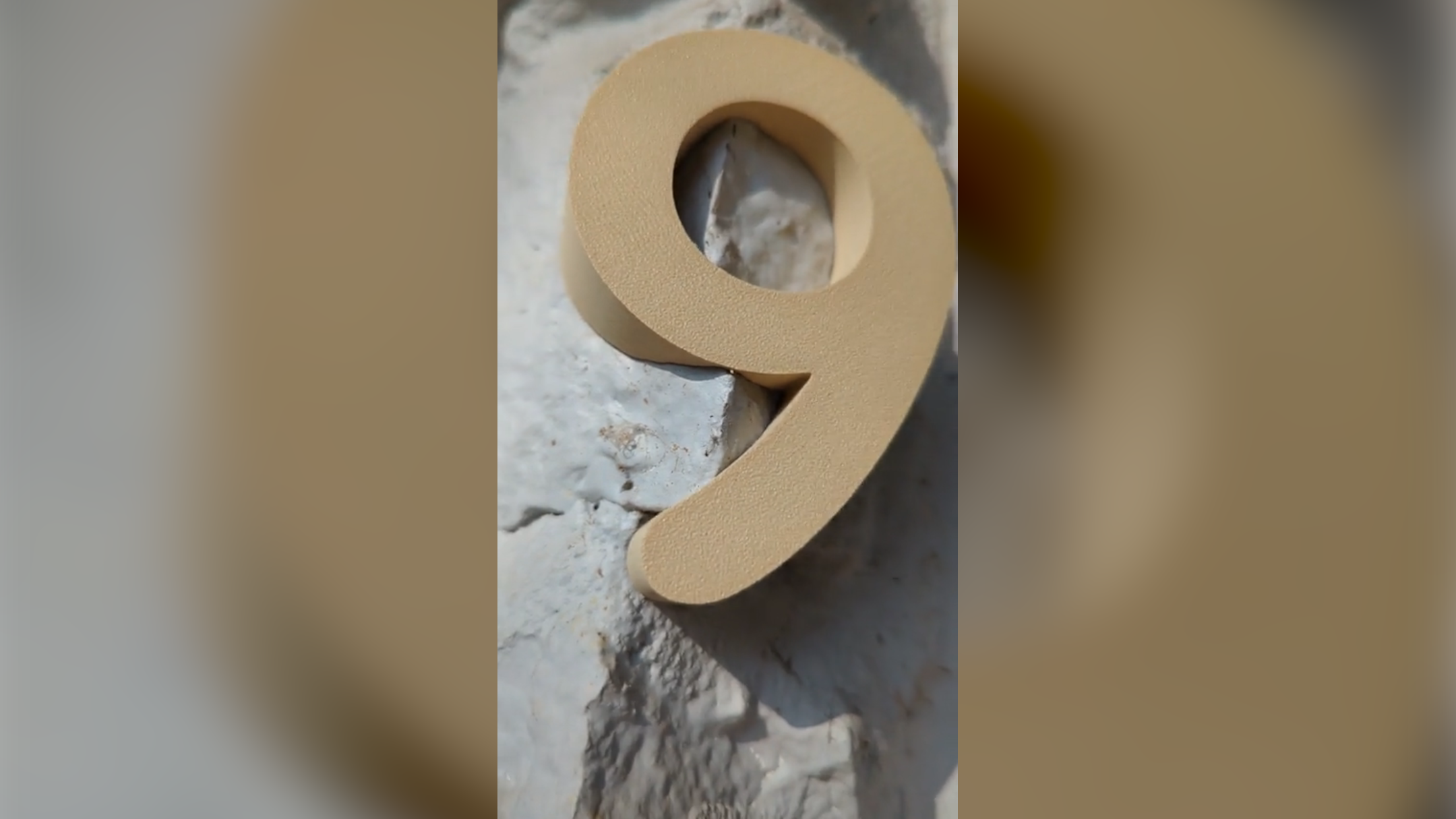
- Use 3D scanning and printing to match the wall's texture so the numbers sit flush and look 'emerging'.
- Scan a surface, boolean the shape in Blender, then print — it fits like a puzzle piece.
- This trick opens endless applications: any printed part can be shaped to match real-world surfaces.
If the only tool you have is a hammer, you tend to see every problem as a nail. Similarly, if the only tool you have is a 3D printer, every problem can be fixed with a 3D print. Okay, granted, you can actually own atonof tools and still see everything as something you can fix with a spool of filament, but my point still stands.
Anyway, the next time you need a new house number made, you could try 3D printing it. And if you don't want just another boring old design, you can take inspiration from this 3D printing wizard who mapped out their house's wall and printed out a number that looks like it's "emerging" from the wall, and it's honestly genius.
This 3D-printed house number uses a 3D wall scan to achieve a cool effect
In a post on the 3D printing subreddit, user derekelliott showed off their latest project. It's a 3D-printed house number with a back that perfectly matches the nooks and crannies of their house's exterior wall. It gives the illusion that the number is "growing" out of the house, or perhaps the house is slowly consuming it. Either way, it's cool.
Check it out in the video below:
So, how did they do it? Well, they combined two technologies: 3D scanning and 3D printing. Using a 3D scanner, they scanned the section of the wall where they wanted to install the number. This gave them an accurate 3D model of the wall, down to the little bumps and crevices.
Then, they designed a house number in the font they wanted. Before printing it, they took the 3D model of their house wall and made an indent on the back of the number that matches its topology. Now the number will fit on the real-world wall like a puzzle piece, giving a lovely flush finish that gives the illusion that the number is part of the wall itself.
Here's how the creator explained it:
Needed new house numbers and thought it would be fun to use the 3D scanner to replicate the stone wall and then use a simple boolean in Blender to cut the shape from an extruded number.
The numbers were eventually printed in black and placed on the flat(ter) face, not the corner.
Honestly, I would have never thought of this, but now that I've seen it, I wonder how many different applications there are for 3D scanners and 3D printers working together. If you want a 3D print to fit flush on something, you can scan it in and print something designed to match its exact shape. The possibilities are endless, really.
If you want to check out this technology, make sure to read about when one of our writerstried using a 3D scanner to prepare their 3D printing files and were left amazed.
0 comments:
Ikutan Komentar